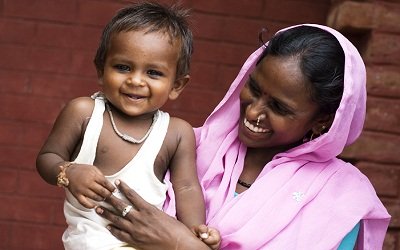Inside BENEO’s new pulse plant: pioneering sustainable protein from faba beans
According to Food Agriculture Organisation’s (FAO) “The State of Food Insecurity in the World 2012” report, there is a reduction of 34.9% in prevalence of undernourishment from 1990-1992 to 2010-2012 (down from 26.9% in 1990-1992 and 17.5% in 2010-2012). In 2012, the FAO report indicates that 17.5% of India’s population was estimated to be undernourished in 2010-2012 (down from 19.0% in 2007-2009 and 20.9% in 2004-2006).
The problem of malnutrition is complex, multi-dimensional and inter-generational in nature and cannot be improved by a single sector alone. The approach to deal with the nutrition challenges has been two pronged: First is the multi-sectoral approach for accelerated action on the determinants of malnutrition in targetting nutrition in schemes/programmes of all the sectors. The second approach is the direct and specific interventions targetted towards the vulnerable groups such as children below six years, adolescent girls, pregnant and lactating mothers.
The government is implementing several schemes/programmes of different ministries/ departments through state governments/Union Territories (UT) administrations. The schemes/programmes include the integrated child development services (ICDS), national rural health mission (NRHM), mid-day meal scheme (MDM), Rajiv Gandhi schemes for empowerment of adolescent girls (RGSEAG) namely SABLA, Indira Gandhi Matritva Sahyog Yojna (IGMSY) as direct targetted interventions.
Besides, indirect multi-sectoral interventions include targetted public distribution system (TPDS), national horticulture mission, national food security mission, Mahatma Gandhi National Rural Employment Guarantee Scheme (MGNREGS), Nirmal Bharat Abhiyan, national rural drinking water programme etc. Several of the schemes namely, ICDS, NRHM, MDM, SGSY have been expanded post 2005-06. All these schemes have potential to address one or other aspect of nutrition.
Nutrition has been receiving attention at the highest level. Recent decisions of government inter alia, include (i) strengthening and restructuring of the ICDS with special focus on pregnant and lactating mothers and children under three, (ii) a multi-sectoral programme to address the maternal and child malnutrition in selected 200 high-burden districts, (iii) a nation-wide information, education and communication campaign, (iv) bringing in strong nutrition focus in ministries dealing with health, drinking water supply and sanitation, school education, ariculture and food and public distribution, (v) programmes such as ICDS and mid-day meal shall use iron fortified iodized salt (Double fortified salt).
The main schemes/programmes of ministry of women and child development which have a bearing on the nutritional status includes the integrated child development services (ICDS)scheme which provides a package of six services namely supplementary nutrition, pre-school non-formal education, nutrition and health education, immunization, health check-up and referral services. ICDS scheme has since been universalized with effect from 2008-09.
Recently government has approved the strengthening and restructuring of ICDS with special focus on pregnant and lactating mothers and children under three. The restructured and strengthened ICDS has been rolled out in three phases with focus on the 200 high burden districts for malnutrition during 2012-13 and additional 200 districts in 2013-14 including districts from the special category states and North Eastern region( NER) and the remaining districts in 2014-15.
Additionally, government has launched an information, education and communication (IEC) campaign against malnutrition for generating awareness on key nutrition issues with effect from December 28, 2012.
The National Food Security Bill, introduced in the Lok Sabha, will contribute towards food security. Government has also announced a pilot programme on nutri-farms for introducing new crop varieties that are rich in micro-nutrients such as iron-rich bajra, protein-rich maize and zinc-rich wheat, informed Krishna Tirath, minister for women and child development, in a written reply to the Lok Sabha on May 3, 2013.

